Lifalili cichlid - Hemichromis lifalili
Scientific name: Hemichromis lifalili
Common name: Lifalili cichlid
Family: Cichlidae
Usual size in fish tanks: 7 - 8 cm (2.76 - 3.15 inch)
014
Recommended pH range: 6.5 - 7.5
Recommended water hardness: 8 - 18°N (142.86 - 321.43ppm)
0°C 32°F30°C 86°F
Recommended temperature range: 22 - 24 °C (71.6 - 75.2°F)
The way how these fish reproduce: Spawning
Where the species comes from: Africa
Temperament to its own species: aggressive/territorial
Temperament toward other fish species: aggressive/territorial
Usual place in the tank: Middle levels
Lifalili Cichlid Overview
The Lifalili Cichlid (Hemichromis lifalili), also known as the Red Jewel Cichlid, is a small yet vibrant species native to the tributaries of the Congo and Ubangui Rivers in Central Africa. These cichlids are known for their stunning red coloration adorned with iridescent spots, making them a popular choice among aquarists. Typically growing to a size of 7 to 8 cm (2.76 to 3.15 inches) in captivity, they are territorial and can exhibit aggressive behavior, especially during breeding.
Tank Requirements
Lifalili Cichlids require a well-structured aquarium environment with plenty of hiding spots. A minimum tank size of 80 liters (20 gallons) is recommended for a single pair. The tank should include rocks, driftwood, and upturned plant pots to provide potential spawning sites and territorial boundaries. Adding dense planting with hardy plants such as Anubias and Java Fern will help reduce aggression and create a more natural habitat.
Maintain water temperatures between 22-24°C (71.6-75.2°F) with a pH range of 6.5 to 7.5. The water hardness should be between 8 to 18°N (142.86 - 321.43 ppm). An efficient filtration system is essential to keep the water clean, as poor water quality can increase stress and aggression in this species.
Food and Feeding
The Lifalili Cichlid is an easy feeder, accepting a wide variety of foods. Their staple diet should consist of high-quality flakes or pellets formulated for cichlids. It is beneficial to supplement their diet with live or frozen foods such as Tubifex, bloodworms, and brine shrimp to provide additional nutrients and mimic their natural feeding habits. Feed small amounts 2-3 times daily to maintain their health and vibrant coloration.
Sexing
Sexing Lifalili Cichlids can be done by observing their coloration. Males typically have a brighter and more intense red coloration, while females tend to have a slightly darker body color. During the breeding period, these differences become more pronounced, making it easier to identify their gender.
Breeding
Lifalili Cichlids are substrate spawners and are relatively easy to breed in an aquarium setting. The female will select a smooth surface, such as a rock or plant leaf, to lay her eggs. During this time, the female will tend to the eggs, while the male aggressively defends the spawning site. Once the eggs hatch, the parents will move the fry around the tank for protection. The fry should be fed micro worms or newly hatched brine shrimp to support their growth.
It is important to note that Lifalili Cichlids become extremely territorial and aggressive during breeding. Providing multiple hiding spots and a large enough tank can help manage this behavior and prevent injury to other fish.
Lifespan
With proper care, the Lifalili Cichlid can live for 5-10 years. Key factors for their longevity include stable water parameters, a varied diet, and a well-maintained tank environment.
Compatibility and Tank Mates
Lifalili Cichlids are aggressive and territorial, especially during spawning, so selecting appropriate tank mates is crucial. It is best to house them with other robust and similarly sized cichlids or species that can tolerate their aggression. Avoid keeping them with small, peaceful fish, as they may become targets of the Lifalili's territorial behavior. A species-only setup with plenty of hiding spots is often the safest option.
Short Description
The Lifalili Cichlid (Hemichromis lifalili) is a stunningly vibrant cichlid known for its deep red coloration and aggressive, territorial nature. They thrive in well-structured aquariums with plenty of hiding places and spawning sites. While relatively easy to care for, their temperament makes them more suitable for experienced aquarists. Proper feeding, tank maintenance, and careful tank mate selection are essential to keep these fish healthy and reduce aggression.
Picture
Bought by aqua-fish.net from jjphoto.dk.


 Thread-finned
Thread-finned 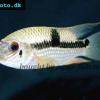 Acara
Acara  Yellow
Yellow  Patrick's
Patrick's  Blue
Blue  Green
Green 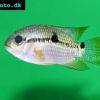 Acara
Acara  White
White  Compressed
Compressed 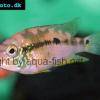 Pastel
Pastel  Midas
Midas  Red
Red  Bluemouth
Bluemouth  False
False 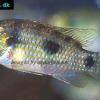 African
African  Agassiz's
Agassiz's  Banded
Banded 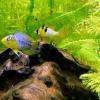 Yellow
Yellow  Cockatoo
Cockatoo  Blue
Blue  Blackstripe
Blackstripe  Highfin
Highfin  Redstripe
Redstripe  Threadfinned
Threadfinned  Macmaster’s
Macmaster’s 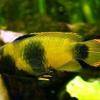 Panda
Panda  Norbert’s
Norbert’s 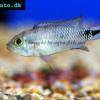 Blue
Blue  Thin-line
Thin-line  Three-striped
Three-striped  Viejita
Viejita 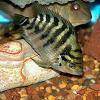 Flier
Flier  Archocentrus
Archocentrus  Convict
Convict  Seven
Seven  Spiny
Spiny  Oscar
Oscar  Sunshine
Sunshine  Chitande
Chitande  Firebird
Firebird  Midnight
Midnight  Lake
Lake  Sunshine
Sunshine  Aulonocara
Aulonocara  Nyasa
Nyasa 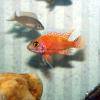 Ruby
Ruby  Grants
Grants  Aulonocranus
Aulonocranus  Chameleon
Chameleon  Benitochromis
Benitochromis  Orinoco
Orinoco  Yellow
Yellow 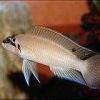 Brichard’s
Brichard’s  Guenther’s
Guenther’s  Southern
Southern  Cichla
Cichla 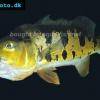 Peacock
Peacock  Chiseltooth
Chiseltooth  Bolivian
Bolivian  Red
Red  Many-pointed
Many-pointed  Jack
Jack  Red
Red  Three
Three 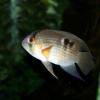 Keyhole
Keyhole  Azureus
Azureus  Red
Red  Jackson’s
Jackson’s  Crenicichla
Crenicichla  Honduran
Honduran  Blue-eye
Blue-eye  Afra
Afra 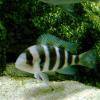 Frontosa
Frontosa  Slender
Slender  Malawi
Malawi  Chequerboard
Chequerboard  Checkerboard
Checkerboard  Malawi
Malawi  Ectodus
Ectodus  Tanganyika
Tanganyika  Canara
Canara  Green
Green  Rostratus
Rostratus  Pearl
Pearl 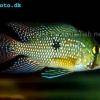 Geophagus
Geophagus  Yellowhump
Yellowhump  Suriname
Suriname  Redhump
Redhump  Red
Red  Dority’s
Dority’s  Argentine
Argentine 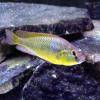 Burton’s
Burton’s  Victoria
Victoria 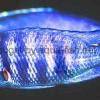 Haplochromis
Haplochromis  Jewel
Jewel  Banded
Banded  Lowland
Lowland  Texas
Texas  Pantano
Pantano  Severum
Severum  Banded
Banded 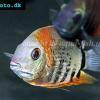 Severum
Severum  Rainbow
Rainbow  Parrot
Parrot  Chocolate
Chocolate  Brown
Brown  Marlieri
Marlieri  Golden
Golden  Striped
Striped  Masked
Masked 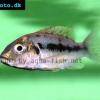 Konye
Konye  Blue
Blue  Trewavas
Trewavas  Electric
Electric  Dwarf
Dwarf  Redbreast
Redbreast  Lamprologus
Lamprologus  Gold
Gold 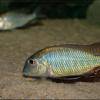 Greenface
Greenface 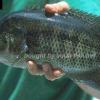 Mayan
Mayan  Aurora
Aurora  Blue
Blue  William’s
William’s 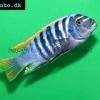 Zebra
Zebra  Malawi
Malawi  Blue
Blue 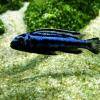 Blue
Blue  Mbuna
Mbuna  Parallel
Parallel  Purple
Purple  Flag
Flag  Bolivian
Bolivian  Ram
Ram  Basket
Basket 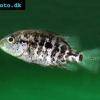 Haitian
Haitian  Zebra
Zebra  Striped
Striped  Neolamprologus
Neolamprologus  Brevis
Brevis  Fairy
Fairy 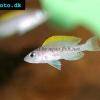 Neolamprologus
Neolamprologus  Cylindricus
Cylindricus  Hecq’s
Hecq’s  Neolamprologus
Neolamprologus  Lemon
Lemon  Mustax
Mustax  Daffodil
Daffodil  Six-bar
Six-bar  Five-bar
Five-bar  Marbled
Marbled 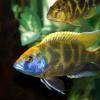 Giraffe
Giraffe  Blue
Blue  Sulphurhead
Sulphurhead  Wolf
Wolf  Jaguar
Jaguar  Blue
Blue  Marakeli
Marakeli  Madagascar
Madagascar  Pinstripe
Pinstripe  Pelmatochromis
Pelmatochromis  Kribensis
Kribensis 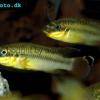 Striped
Striped  Red
Red  Deepwater
Deepwater  Fenestratus
Fenestratus  Nichols’
Nichols’  Southern
Southern  Bumble
Bumble  Demason’s
Demason’s  Slender
Slender  Red
Red  Mbuna
Mbuna  Malawi
Malawi  Kenyi
Kenyi  Powder
Powder  Altum
Altum  Angelfish
Angelfish  Angelfish
Angelfish 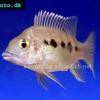 East
East  Juba
Juba  Earth
Earth 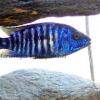 Electric
Electric  Azure
Azure 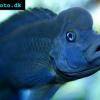 Lionhead
Lionhead  Discus
Discus  Blue
Blue  Red
Red  Zebra
Zebra  Brichard’s
Brichard’s  Blue
Blue  Firemouth
Firemouth  Zebra
Zebra  Yellow
Yellow  Blue
Blue  Dwarf
Dwarf  Blunthead
Blunthead 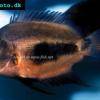 The
The  White
White  Twoband
Twoband  Fenestratus
Fenestratus  Window
Window  Tailbar
Tailbar  Black
Black  Redhead
Redhead 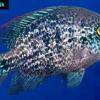 Oaxaca
Oaxaca  Xenotilapia
Xenotilapia